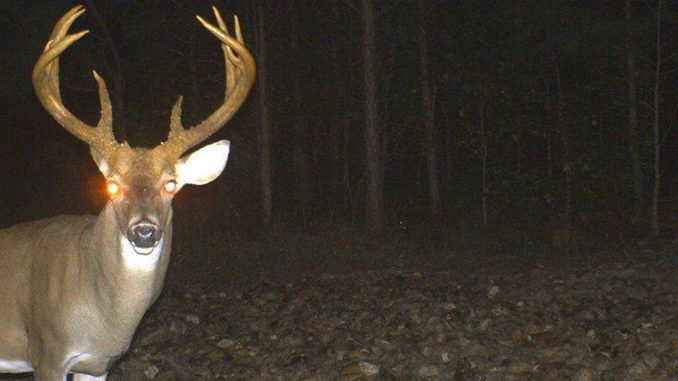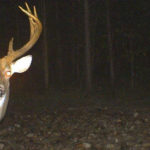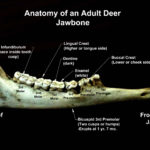
Take it from their teeth; deer ages are important
The end of another deer season is upon us, but unfinished business remains on the “to-do list” for groups and individuals aspiring towards quality deer management. Harvest records from the season will not be complete until the jawbones from deer killed have been studied and aged effectively.
If you spent the season filling your freezer and sending a trophy or two to the taxidermist, it’s time to devote time to determine the age of deer killed.
Hunters must understand that knowing the age of each deer harvested is important in trophy deer management. In order for deer populations to be managed and improved, harvest data can be some of the most important information collected. And the age of every deer killed will play into the management equation.
Aging deer on the hoof is a problem, to say the least. Until a deer is harvested and available for close examination, hunters will never truly understand the age dynamics and stratification of the herd. Age will serve as the metric used to determine if the deer is above or below par at that age class.
The age and characteristics of the deer can be correlated to determine if the deer are receiving adequate nutrition. Age and body mass should be directly proportional; deer should progressively gain weight with age.
Essentially, trophy bucks capable of producing high scores on the Boone & Crockett scale need a combination of proper nutrition, supreme genetics and several years of age to reach antler maturity. Few will debate that age is the most-important factor for growing big, mature animals with gargantuan antlers. While deer mature at 4 1/2 years old, antler mass will peak between 4 1/2 and 6 1/2 years. After determining the age of each deer killed, deer managers will understand how long it takes certain bucks to reach a mature size.
If all of the deer killed perceived as “shooter” bucks end up only being 2 1/2 years old, the upside of allowing these deer to mature for several more years is good news. But the opposite could be true too with a combination of poor nutrition and inferior genetics if the dead bucks with scraggly headgear are a few days from the rest home. Antler size, body mass and age should be correlated to determine if population is healthy.
Generally, bucks are the primary target for age determination, but does are important, too. Generally, does will make up the majority of the deer herd. Hunters should always target the older, mature does when possible. But removing any sexually-receptive females of any age will contribute to population control.
With age determination determined to be a critical step during the post-season wrap-up, hunters must find a way to correctly age deer. Typically, many clubs will collect the lower jawbones from deer killed throughout the season and will bring in an expert to examine them and determine the age. Hunters, however, can learn how to age deer by following a few steps.
To the evaluator’s advantage, deer are not long-lived creatures. Deer in the wild can live to be eight to nine, but very few deer live past 4 1/2 years. As another advantage, the most important age classes are between six months and 4 1/2 years, so only five age classes are critical for amateur deer agers.
Typically, deer are aged based on tooth replacement and wear. Tooth replacement determines ages from six through 19 months. Afterwards, deer are considered adults and must be aged by tooth-wear patterns.
To start with, hunters must become familiar with the dental anatomy and the various terms used for describing age-related traits in teeth. Adult deer have three premolars and three molars. The premolars are at the front, and the molars are at the rear of the mouth. Eruption of each of these teeth will identify how old a deer is by the month until all of these teeth are fully erupted at 19 of age.
Fortunately, the jawbones from younger deer are easier to determine age than elderly animals. Deer managers only need to know if the deer was born in the current year or during the previous year, but they can determine when a young deer was conceived in specific months if the date of harvest is recorded. This can help hunters know when the prime breeding time is, but it takes a significant number of fawns harvested to gain any confidence in that premise. Hunters trying to manage their herd using the simple approach can stick with the age or the year the deer was born instead of the actual birth month.
Tooth wear is described by looking at the amount of white enamel showing as compared to the brown dentin. The more a tooth wears, the less enamel and the more dentin will be showing. Additionally, the teeth have a higher crest on the inside or lingual side, and a lower ridge or crest on the outer or baccal side. Essentially, deer beyond their second season will wear down the high points first. As deer age, the baccal crest or lower tooth ridge will begin to wear. Over time, the teeth will begin to wear so extensively that both the molars and premolars will become concave, with the majority of the enamel worn away and a significant level of dentin showing.
As a quick guide, the following descriptions can be used to determine the approximate age of deer by tooth replacement and wear. The first three teeth from the front are the premolars and the last three teeth are called molars. The first tooth from the front is the first premolar and the last tooth at the back is the third molar. The remaining teeth in the middle are in sequential order.
Six months – Only three to four teeth on each side of jaw;
Seventeen months – Six teeth on each side of jaw. Third tooth towards jaw will have three cusps and last tooth (or molar) will only be partially erupted.
Nineteen months – Six teeth on each side of jaw. Third tooth towards jaw will be replaced by a tooth with two cusps, and the last molar will be fully erupted. Very little wear and lingual crest fully intact.
2 1/2 years – Partial wear on lingual crest making it very sharp to the touch and some dentin (or brown) showing in both molars and premolars.
3 1/2 years – Lingual crest on fourth tooth from front is blunt and dentin is wider than white enamel. Last cusp on last tooth in back of jaw worn and concave.
4 1/2 years – Lingual crest on fourth tooth from front is very worn and dentin is two times wider than white enamel. Last cusp on last tooth in back of jaw is worn and slopes towards back of mouth.
5 1/2 years – Dentin is wider than enamel on back three teeth. Molars and premolars begin to become concave with lingual crests becoming excessively-worn but still visible.
6 years and older – All teeth will be concave of varying degree with both crests worn excessively.






Be the first to comment